Nationality Choctaw-Cherokee Name Jeffrey Gibson | Website www.jeffreygibson.net Known for Painting, sculpture | |
 | ||
Born March 31, 1972 (age 53) ( 1972-03-31 ) | ||
Wch 2015 beijing jeffrey gibson bah 400m hurdles final bronze
Jeffrey A. Gibson (born March 31, 1972) is a Choctaw-Cherokee painter and sculptor.
Contents
- Wch 2015 beijing jeffrey gibson bah 400m hurdles final bronze
- Whc 2015 beijing jeffrey gibson bah 400m hurdles semi final 2
- Early life
- Higher education
- Current life
- Fine art career
- Influences
- Rawhide Paintings
- Atmospheric landscapes
- Airbrushing
- Totems
- Alive
- Creation process
- Reception
- Notable collections
- Notable exhibitions
- Notable awards and grants
- References
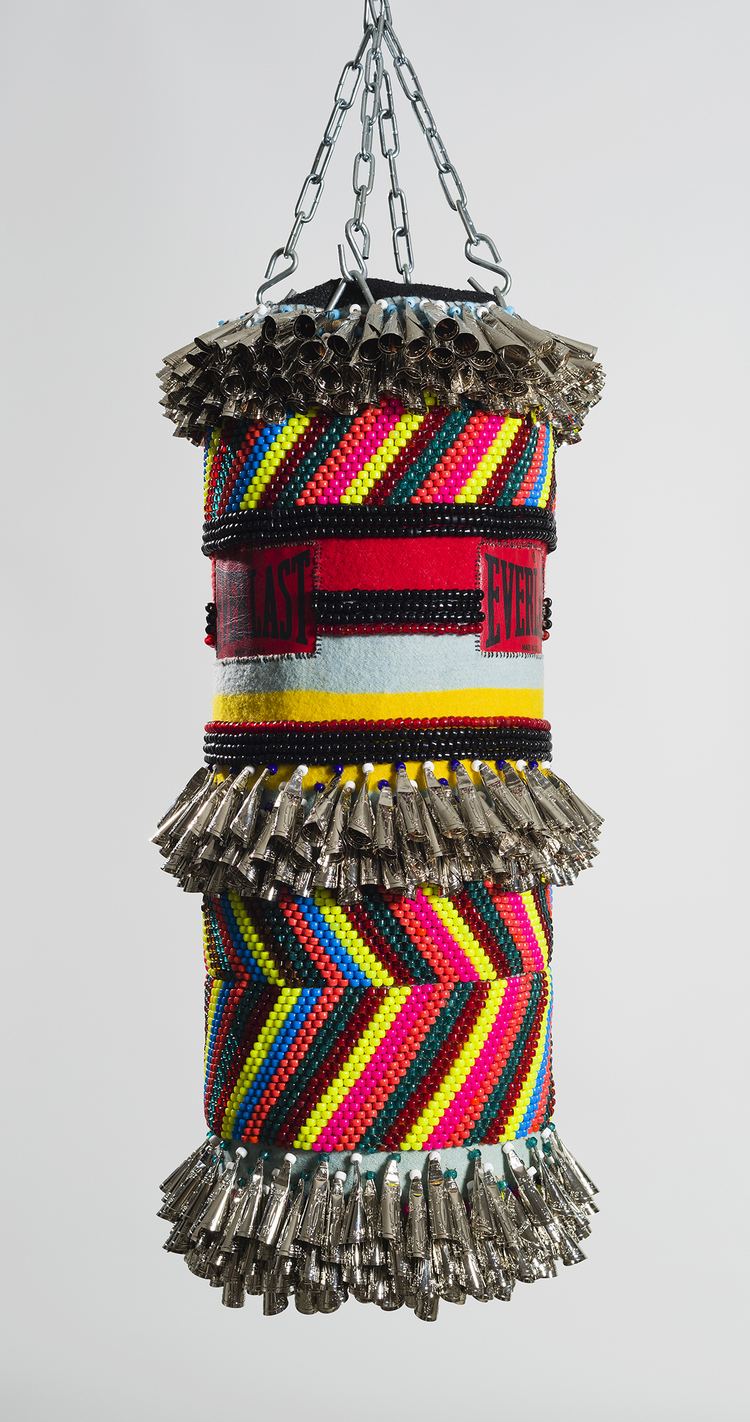
Whc 2015 beijing jeffrey gibson bah 400m hurdles semi final 2
Early life
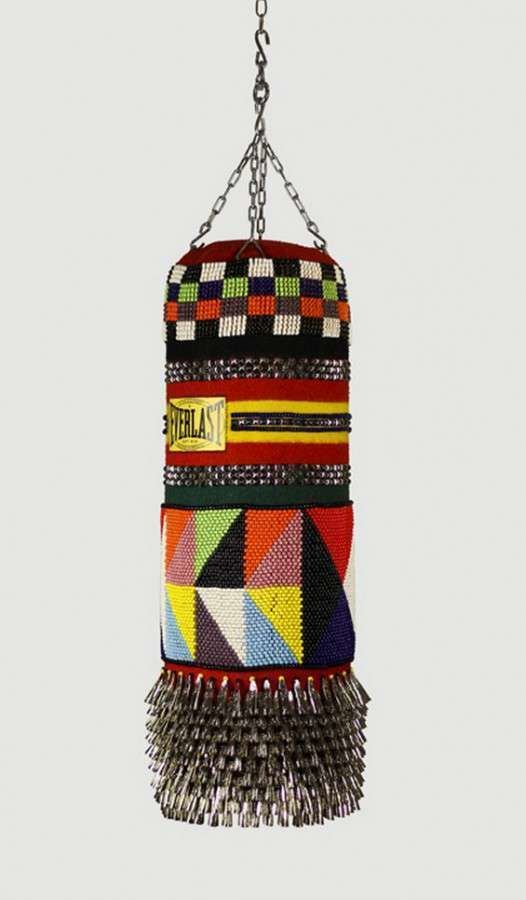
Born in Colorado, as a child his family moved frequently. As a youth he lived in Germany and Korea. Important to his role as an artist, press releases state that "This unique combination of cultural perspectives and exposure are essential to understanding Gibson’s artworks that combine and transform seemingly disparate references drawn from both Western and non-Western sources."
Higher education

In 1995 Gibson earned his Bachelor of Fine Arts from the Art Institute of Chicago. In 1998 he received his Master of Fine Arts from the Royal College of Art, which was paid for by the Mississippi Band of Choctaw Indians. Gibson remarked on this opportunity provided for him: "My community has supported me...My chief felt that me going there, being a strong artist, made him stronger."
Current life
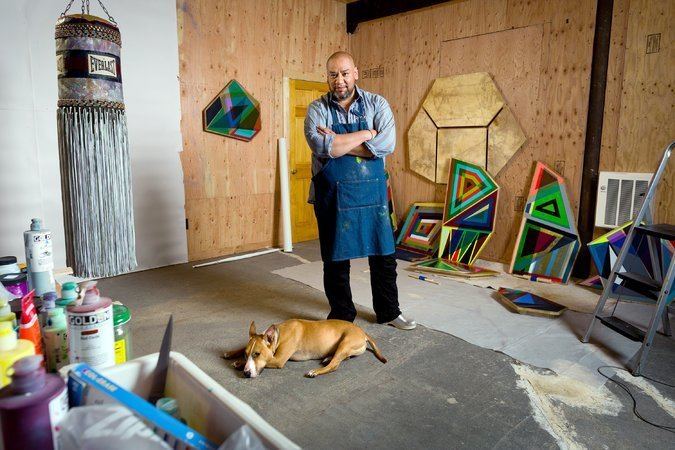
He is currently an Artist in Residence at Bard College and teaches in Studio Art. In 2010 he was a visiting artist at the California College of the Arts. He lives and works in Hudson, New York.
Fine art career
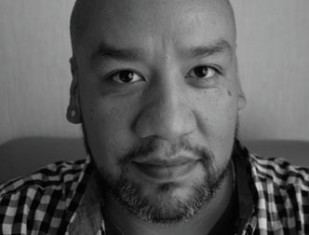
Utopia was important for me to envision and relates to my being Native American and having grown up solely in a Western consumer culture. My desire to act out the role of an explorer depicting an inviting landscape, via painting and specimen retrieval, was a reaction to Native tribes’ being consistently described as part of a nostalgic and romantic vision of pre-colonized Indian life. The aesthetic of these paintings and sculptures came from turn-of-the-century Iroquois whimsies, contemporary and historic powwow regalia, cultural adornment of non-Western cultures, techno rave and club culture, and earlier utopian models.
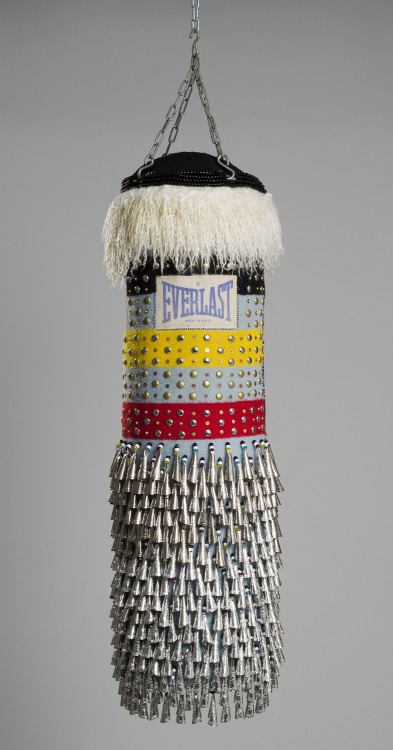
Influences
Gibson pulls influences from events that revolve around dancing, pulling inspiration from Leigh Bowery and his dramatic nightclub persona. Pow-wows, nightclubs, and raves provide contrasts as rural and urban venues, serving as spaces for dancing, movement, and dramatic fashion/regalia. Keeping with regalia, 19th-century Iroquois beadwork also provides inspiration, as colorful beads often find their way into Gibson's artworks. Gibson also provides his own spin on graffiti, which is seen frequently in his works.
He also credits his nomadic lifestyle as a major influence, bringing together what he describes as:
...varying aesthetics of each place. Some have had specific cultural aesthetics, language barriers, cultural barriers, etcetera. These differences funnel through me, a queer Native male born toward the end of the 20th century and entering the 21st century. I consider this hybrid in the construction of my work and attempt to show that complexity.
"Rawhide Paintings"
Gibson's current practice involves painting in oil and acrylic on rawhide-clad wood panels. He is recycling found objects such as antique shaving mirrors and ironing boards and coveres them in untanned deer-, goat-, or elkskin. Gibson combines domestic, Native American and Hard-edge modernist references. His punching bag made from found Everlast punching bags, US army wool blankets, glass beads, tin jingles and the artist's repurposed paintings exemplify the dialogue between US pop culture and Native traditions.
"Atmospheric landscapes"
Before that Gibson's most notable works, his at times 3-D wall abstracts, have been described as "atmospheric landscapes". Working in oil paint he also brings together objects that have become a signature to his works: pigmented silicon, urethane foam, and beads.
Airbrushing
Airbrushing is another common tool used in his paintings, sculptures, and prints, incorporating oil paint and spray paint to create neon colored abstracts such as Singular (2008) and Submerge (2007). These works also find inspiration in graffiti, reflective of Gibson's urban life in New York City.
Totems
Creating his own totem sculptures, in 2009 Gibson produced the Totems series for an exhibition at Sala Diaz in San Antonio, Texas. This series of sculptures involved Gibson arriving five days before the opening to put together a collection of found objects to create what have been described, by the artist, as "fantasy sex partners, objects of desire".
The Totems feature objects such as mannequins acquired from Craigslist, a wig, plastic flowers, toys, cowboy boots, flower pots, his signature spray paint and other objects. In the end Gibson created two human-like figures and a totem pole from the flower pots. Writer Ben Judson described Totems as way Gibson "uses the stereotyping of his own people as a way of exploring the use of metaphor in identity formation, cultural critique and consumerism without forfeiting lyricism or indulging in self-righteousness (apart, that is, from his press release)."
Alive
Shown as part of the Desert X exhibit in the Coachella Valley from February 25 - April 30 2017.
Creation process
In order to keep regular studio hours, Gibson prefers to work between the hours of 10am and 6pm. His computer, cell phone and a movie are generally at his reach if a break is needed while working. Music usually plays in the background, sometimes random, sometimes a specific record with genres ranging from African funk, jazz, punk, pop music, rap, R&B, disco, as well as East Indian drumming.
Reception
Gibson's abstract works have been compared to artists such as Martin Johnson Heade, Cy Twombly, Chris Ofili, and Indigenous Australian art. Artist and poet Jimmie Durham declared that Gibson "might be our Miles Davis", our referring to Native America. While some celebrate him as a Native artist, others celebrate his ability to move freely in and out of Native and non-Native contemporary art worlds.
Notable collections
Notable exhibitions
Gibson has also exhibited at numerous events such as the New Art Dealers Alliance Fair, ARCOmadrid, as well as many private galleries and public institutions.
